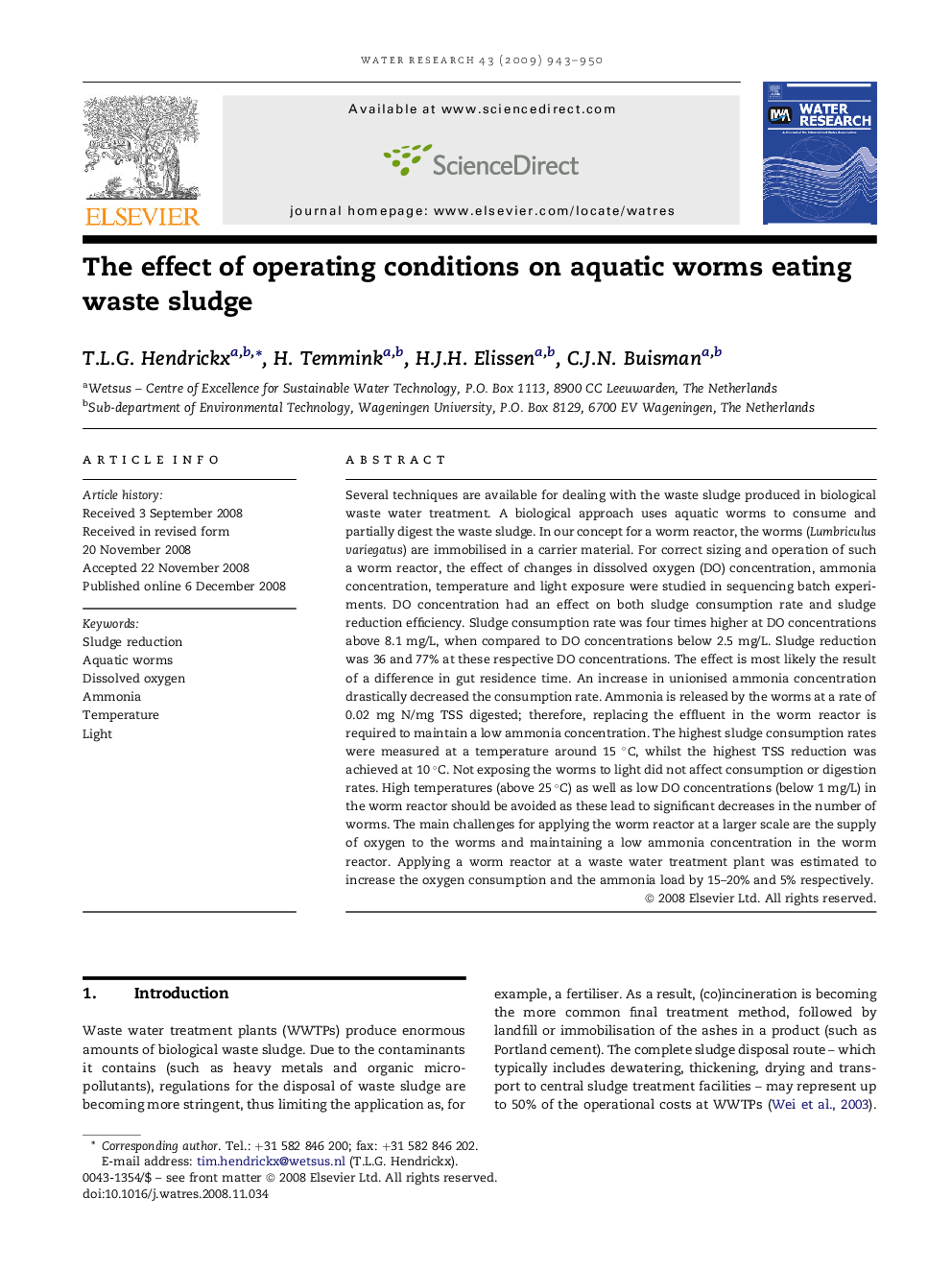| کد مقاله | کد نشریه | سال انتشار | مقاله انگلیسی | نسخه تمام متن |
|---|---|---|---|---|
| 4484372 | 1316918 | 2009 | 8 صفحه PDF | دانلود رایگان |

Several techniques are available for dealing with the waste sludge produced in biological waste water treatment. A biological approach uses aquatic worms to consume and partially digest the waste sludge. In our concept for a worm reactor, the worms (Lumbriculus variegatus) are immobilised in a carrier material. For correct sizing and operation of such a worm reactor, the effect of changes in dissolved oxygen (DO) concentration, ammonia concentration, temperature and light exposure were studied in sequencing batch experiments. DO concentration had an effect on both sludge consumption rate and sludge reduction efficiency. Sludge consumption rate was four times higher at DO concentrations above 8.1 mg/L, when compared to DO concentrations below 2.5 mg/L. Sludge reduction was 36 and 77% at these respective DO concentrations. The effect is most likely the result of a difference in gut residence time. An increase in unionised ammonia concentration drastically decreased the consumption rate. Ammonia is released by the worms at a rate of 0.02 mg N/mg TSS digested; therefore, replacing the effluent in the worm reactor is required to maintain a low ammonia concentration. The highest sludge consumption rates were measured at a temperature around 15 °C, whilst the highest TSS reduction was achieved at 10 °C. Not exposing the worms to light did not affect consumption or digestion rates. High temperatures (above 25 °C) as well as low DO concentrations (below 1 mg/L) in the worm reactor should be avoided as these lead to significant decreases in the number of worms. The main challenges for applying the worm reactor at a larger scale are the supply of oxygen to the worms and maintaining a low ammonia concentration in the worm reactor. Applying a worm reactor at a waste water treatment plant was estimated to increase the oxygen consumption and the ammonia load by 15–20% and 5% respectively.
Journal: Water Research - Volume 43, Issue 4, March 2009, Pages 943–950